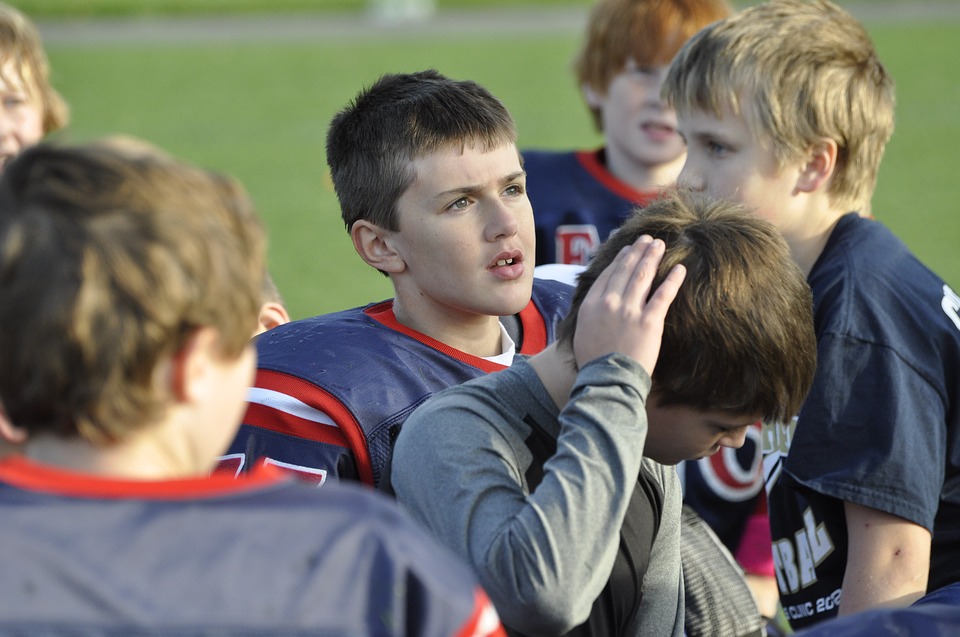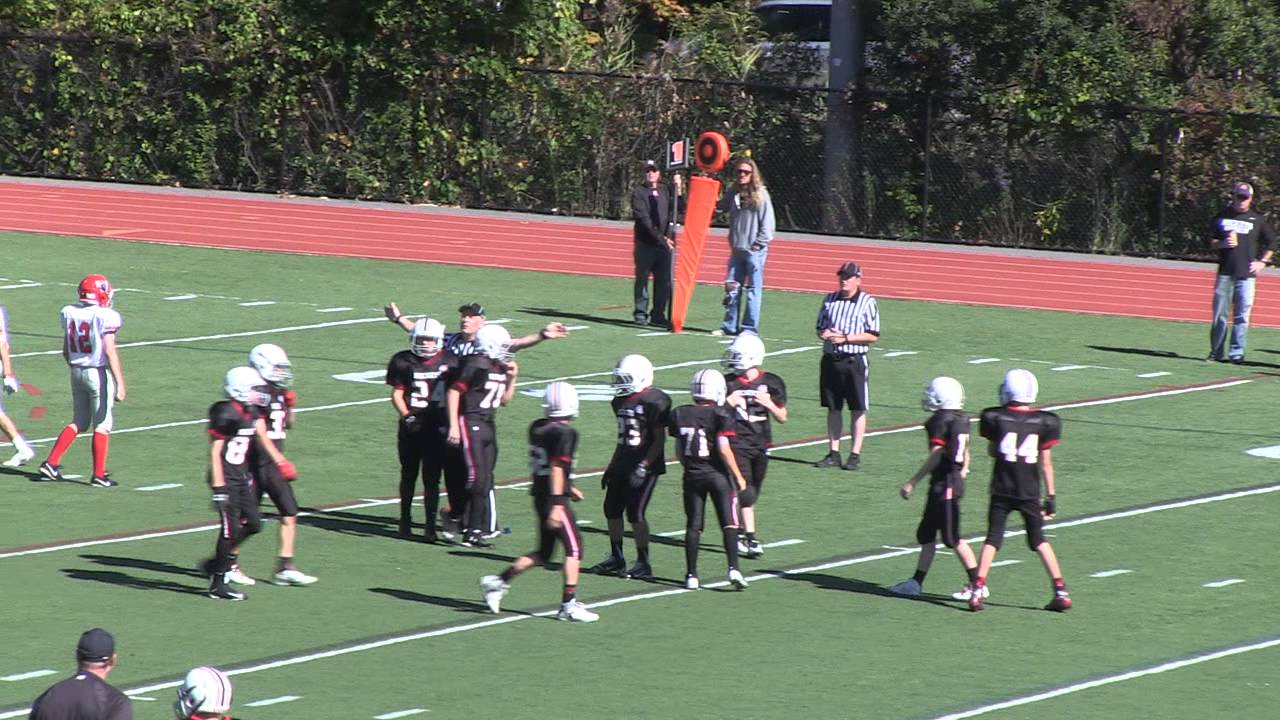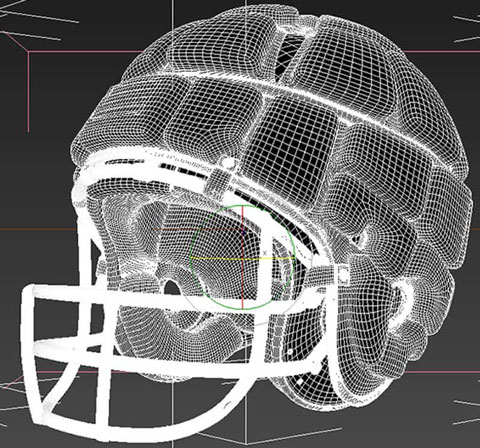
As the connection between tackle football and permanent brain damage became a national conversation over the past decade, parents began to collectively ask the same question… Should I let my child play football?
This is not a new question, however. In the early 20th century, Amos Alonzo Stagg, often called the godfather of modern football, petitioned alongside the president of Notre Dame to get the sport banned from prep schools across the country. In 1909, New York City went as far as forbidding football from all city high schools (the ban lasted only one year).
The number of high-school students playing football dropped by 2.4 percent over the last five years, but that still leaves more than a million kids suiting up after class in 2016. In fact, last year there were 3.21 million individuals 6 to 17 years old playing tackle football in the United States, which was a drop of 750,000 since 2009.
Things began to change in 2002 when Bennet Omalu discovered chronic traumatic encephalopathy (CTE) in Mike Webster’s brain. Webster played center in the NFL for 16 seasons, after his retirement in 1990 he suffered from amnesia, depression, and dementia. When Omalu found CTE in his brain after his death, it was the first time the disease, then known as “punch-drunk syndrome,” was found in a football player and not a boxer.
Concussion Trailer: Will Smith as Bennet Omalu
Omalu, played by Will Smith in the major motion picture, Concussion, showed that the football helmet was not protecting the brain like we once thought. Last year, in a joint study, the Department of Veterans Affairs and Boston University, showed that of 91 former NFL player’s brains tested for CTE, 87 came back positive for the severe trauma. That is a rate of 96 percent, and of those affected, 40 percent were lineman who do not sustain the hard hits that many observers believed were the main cause of serious brain trauma.
“Who knows how many hits is too many?” lamented Chris Borland, who played in the NFL for only one season before retiring over concerns of brain damage. And as of today scientists and doctors still have no number to answer Borland’s question. In fact, doctors cannot even confirm CTE in a living patient. Only after death can the presence of CTE be detected, and doctors cannot truly say if it is ever safe for an any individual to take a hit.
Borland’s recommendation? If you are going to play football, “Don’t play through concussions.”
More Training Required
For many years in the NFL, the most celebrated hits were helmet to helmet, now considered illegal, but those hits became normal in college, high school, and even in Pop Warner. Advocates for a safer game say that limiting severe injuries start with teaching players proper tackling techniques from a young age, but in 2015, less than 44 percent of youth league coaches were trained.
 Safety professionals say that when tackling, a player should lead with their shoulder pad, not their helmet, and never target another player’s head.
Safety professionals say that when tackling, a player should lead with their shoulder pad, not their helmet, and never target another player’s head.
Some doctors go so far as saying the only way to completely avoid the risk of brain trauma is to eliminate tackling all together by playing flag football as an alternative.
It has been estimated that a 9 to 12-year-old playing tackle football in an organized league can take on between 240 and 585 hits to the head each season.
Now the Center for Disease Control (CDC) is currently investigating “the risks of tackling in youth football,” to identify what age children are the most vulnerable. In 2011, the American Academy of Pediatrics and the Canadian Pediatric Society released a position paper that recommended parents stop allowing their kids to play high-impact sports like football, boxing, and mixed martial arts all together.
Pop Warner Settles CTE Lawsuit
Pop Warner, the largest youth football league in the U.S., settled a lawsuit in March with a family whose son had CTE, suffered depression, and went on to take his own life at the age of 25. In 2010, the youth league, who has more than 200,000 participants, set forth guidelines that require players to be sidelined after exhibiting concussion symptoms and states that a licensed medical professional must clear a player before they return to the field. Last May, the organization took another step to make their games safer by eliminating kick-offs for players under the age of 11. But the new regulations did not stop a class-action lawsuit from being filed in September accusing Pop Warner and USA Football (the NFL’s youth division) of acting “with callous indifference” towards player’s safety in respect to head trauma.

As the NFL and Pop Warner have worked to limit unsafe and illegal tackling practices, many researchers believe that it is the constant legal hits that are really doing the damage. Some safety advocates have petitioned all tackle football leagues to start counting hits on players, like baseball pitchers count their throws, so they can start accumulating data.
“I don’t see how a reasonable person would argue that we should count pitches to protect the elbow, but not count hits to protect the brain,” said Stefan Duma, a professor at Virginia Tech, who has compared the head trauma suffered in football to the damage incurred during a car crash. Duma said that helmet sensors or a designated observer could keep track of the numbers. But the NFL, NCAA, and Pop Warner have all been reluctant to institute a count.
“Nobody wants to believe that regular hits in football cause long term damage to the brain,” said Chris Nowinski, director of the non-profit, Concussion Legacy Foundation. “Football culture is resistant to counting hits, since people don’t think they’re worth counting.”
Limit Full Contact Practices
One thing all sides have agreed on is to limit full contact practices, where makers of The Guardian helmet cover claim 90% of concussions take place.  Even the Ivy League, an intercollegiate conference made up of the top universities in the country, has stopped all tackling during in-season practices. Pop Warner has not gone quite that far. In 2013, they decreased the number of full-contact practices from 33 percent to 25 percent, but tackling is still allowed as long as they are not lined up further than three-yards away from each other.
Even the Ivy League, an intercollegiate conference made up of the top universities in the country, has stopped all tackling during in-season practices. Pop Warner has not gone quite that far. In 2013, they decreased the number of full-contact practices from 33 percent to 25 percent, but tackling is still allowed as long as they are not lined up further than three-yards away from each other.
Even former NFL legend and hall of famer Mike Ditka agrees that “the risk is worse than the reward.” Ditka said that children should not be playing tackle football and that he, a three-time super bowl champion, would not let his own son play if he was born today.
“Why, then, do we continue to intentionally expose our children to this risk?” asks Bennet Omalu in an op-ed for the New York Times. “These cellular injuries accumulate to cause irreversible brain damage.”
Omalu goes on to explain that the risks are permanent because, “unlike most other organs, does not have the capacity to cure itself following all types of injury.”
When an individual loses a neuron, it is lost forever.
Omalu and many others believe that no child under 14 should be allowed to play tackle football, pointing to studies that show children can suffer brain damage even when they have not sustained an outright concussion. In other words, the small hits add up. But others argue that children who do not learn to tackle correctly at a young age are more susceptible when they do take the field.
“The worst cases I see in my clinic are from high school kids who’ve never played football before,” said Micky Collins, who leads the Sports Medicine Concussion Program at the University of Pittsburgh. “They haven’t developed the right skills. They’re not prepared.”
Every parent has the responsibility to educate themselves and their children to make sure that they are limiting the potential for any injury, but in tackle football there is no way to avoid a hit to the head.
Youth Football’s History, Facts, and Stats
- In 1909, New York City went as far as forbidding football from all city high schools (the ban lasted only one year)
- 1929 marked the first year of Pop Warner Football.
- The number of high-school students playing football dropped by 2.4 percent over the last five years
- In 2015 there were 3.21 million individuals 6 to 17 years old playing tackle football in the United States, which was a drop of 750,000 since 2009.
- A joint study, the Department of Veterans Affairs and Boston University, showed that of 91 former NFL player’s brains tested for CTE, 87 came back positive for the severe trauma.
- Doctors cannot confirm CTE in a living patient.
- Only after death can the presence of CTE be detected.
- In 2015, less than 44 percent of youth league coaches were trained in proper tackling techniques.
- It has been estimated that a 9 to 12-year-old playing tackle football in an organized league can take on between 240 and 585 hits to the head each season.
- In 2013, Pop Warner decreased the number of full-contact practices from 33 percent to 25 percent.
- Bennet Omalu and many others believe that no child under 14 should be allowed to play tackle football
